8 Healthy Foods That Can Also Be Toxic—or Even Fatal
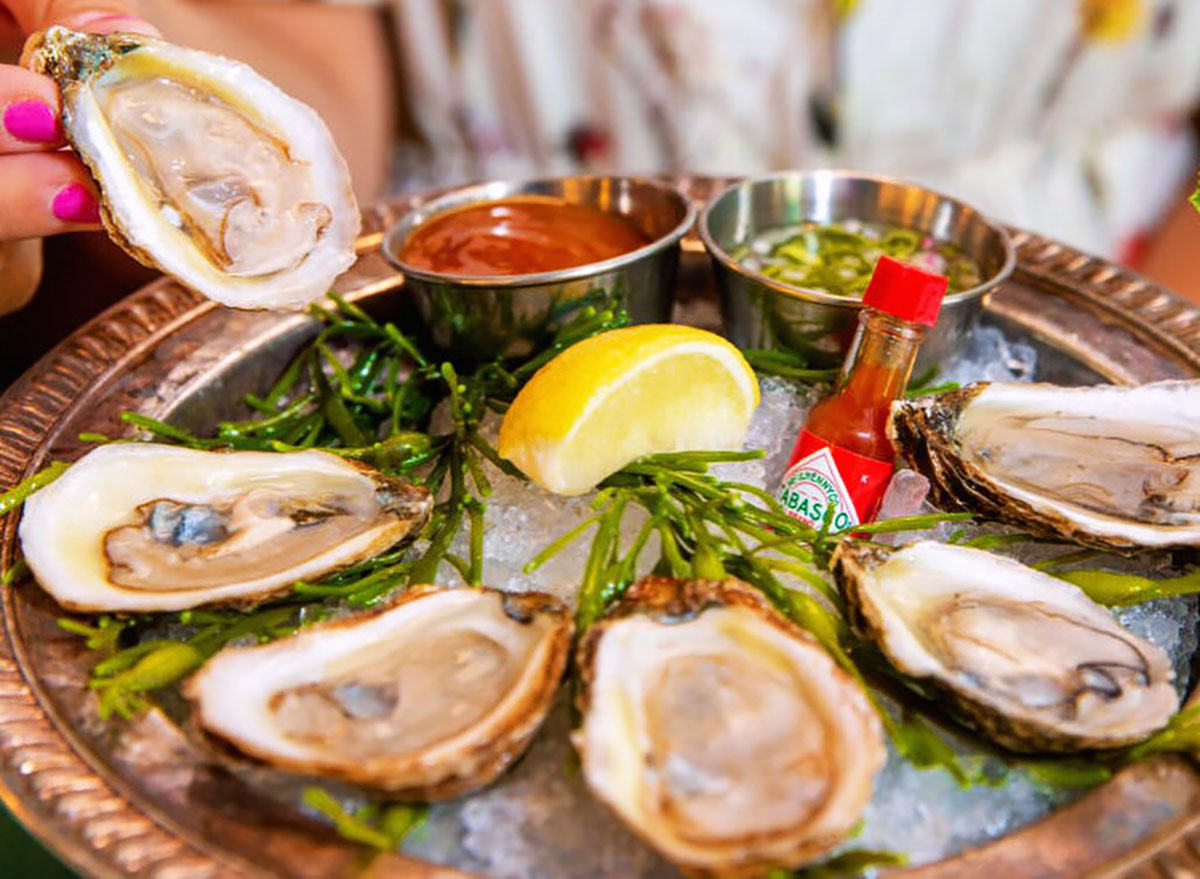
There’s no denying that if you want to live a long and healthy life, adopting a healthy diet is key. After all, studies have shown that a healthy diet and quality eating patterns can reduce your risk for premature mortality significantly. But like most things in life, there’s a catch. Under the right set of circumstances, even some of the foods we view as healthy can become potentially dangerous if you eat too much of them, or if they’re not prepared correctly.
But which healthy foods are capable of potentially posing a toxic threat, and what’s the best way to make sure you’re only eating foods that are safe to consume? And how and why does this happen in the first place? We spoke to several nutrition experts and a medical doctor to help answer these questions.
“There are a few reasons why the food we may think is good for us could actually harm us,” Dr. Beth McCampbell, MD, a physician at Penn Medicine Lancaster General Health, tells Eat This, Not That! “Common causes are undiagnosed or unrecognized food allergies, or when a food allergen is inadvertently or unknowingly ingested by someone, food that has spoiled or is not properly cooked, or food that is only safe if eaten a certain way. If you are pregnant or immunocompromised, you may be more susceptible to infections, so there are many foods that you shouldn’t eat that would normally be relatively safe.”
Keep reading to find out which healthy foods can sometimes yield toxic or even fatal consequences, and how to continue enjoying them safely.
Brown rice
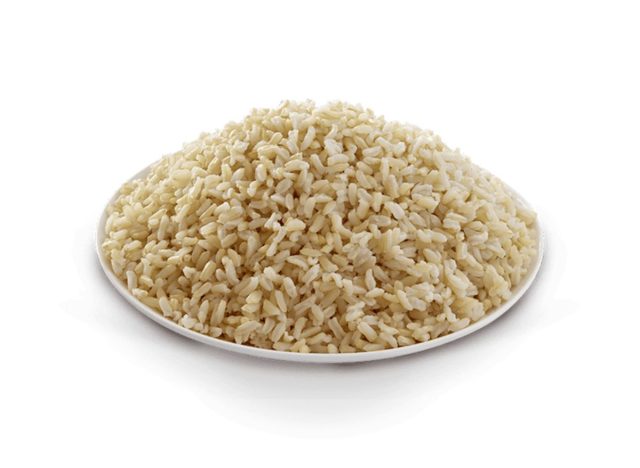
Brown rice may be considered a nutrient-dense whole grain, but this fiber-filled pantry staple may also contain inorganic arsenic. And according to Consumer Reports, consistent exposure to arsenic can increase your risk for heart disease and type 2 diabetes, as well as skin, bladder, and liver cancer.
“Foods that contain brown rice can really add up when it comes to the carcinogenic heavy metal arsenic, since arsenic builds up in the otherwise healthy, fiber-filled, and antioxidant-rich outer layers of the grain,” say the Nutrition Twins, Tammy Lakatos Shames, RDN, CDN, CFT, CLT, and Lyssie Lakatos, RDN, CDN, CFT, CLT. “These layers are stripped off white rice during processing, so brown rice has 80% more inorganic arsenic on average than white rice.”
“Arsenic is found in rice cereal, rice pasta, rice cakes, and rice drinks,” they add.
The key to consuming these brown rice and brown rice-based products without worrying about it is to simply be mindful of how much you consume, and eat them in moderation.
“Brown rice is healthier than white rice in many other ways, but you don’t want to overdo it,” the Twins say. “So be sure to get variety, since arsenic is likely to build up if you, for example, drink rice milk and eat brown rice every day.”
Shellfish
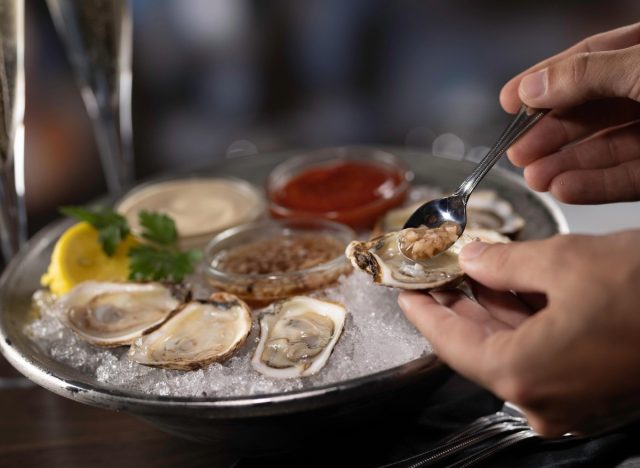
Mussels, oysters, clams, scallops, crab, shrimp, lobster, and the like may pose a toxic threat to your health depending on what these shellfish consumed while still in the sea, and this contamination risk is especially prevalent in shellfish that inhabit mild or tropical waters. As the CDC notes, “Toxins originate in small marine organisms (dinoflagellates or diatoms) that are ingested and are concentrated by shellfish.”
Symptoms of shellfish poisoning can include gastroenteritis, dizziness, disorientation, lethargy, short-term memory loss, diarrhea, nausea, vomiting, abdominal pain, and in more serious cases, respiratory difficulty, seizures, coma, and even death. One of the more notable shellfish poisoning outbreaks occurred in Prince Edward Island, Canada, in 1987. This resulted in over 100 people falling ill after eating contaminated mussels; there were even a few fatalities.
Unpasteurized cheese
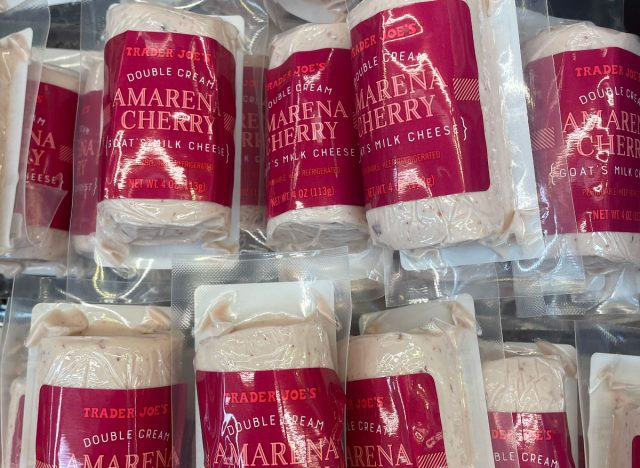
Unpasteurized cheese can be potentially toxic because without the sterilization pasteurization provides, your cheese can be a petri dish for host food-borne illnesses and bacteria with potentially serious consequences. “[The biggest dangers are] listeria and campylobacteriosis,” says Toby Amidor, MS, RD, CDN, FAND, award-winning nutrition expert, bestselling author of Diabetes Create Your Plate Meal Prep Cookbook, and member of our Medical Expert Board.
According to the CDC, campylobacteriosis is “the most common bacterial cause of diarrheal illness in the United States” and affects 1.5 million people in the U.S. each year. Though an unwelcome diagnosis that has historically yielded some fatalities, the risk of mortality is far higher in cases of listeria, which the CDC believes is the third leading cause of food poisoning and foodborne illness-related deaths in the U.S.
Stone fruits
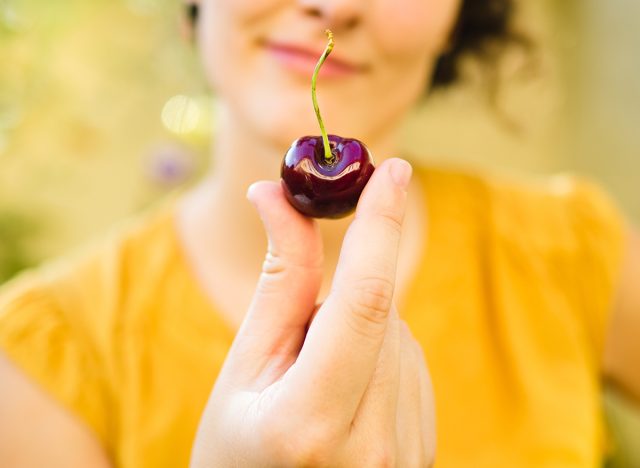
“If you are a fan of the show Ozark, you already know that ingesting a large quantity of ground cherry pits can certainly be toxic,” says Lauren Manaker, MS, RDN, LDN, CLEC, CPT, an award-winning registered dietitian, book author, recipe developer, and member of our Medical Expert Board. “Just look at the stunt that Darlene Snell pulled off!” (If you haven’t seen the show, suffice it to say that ground cherry pits are used as a form of fatal poison in a particularly memorable episode.)
Cherries and other stone fruits like peaches, apricots, and plums can be potentially toxic because they carry cyanogenic compounds that your body can convert into poisonous hydrogen cyanide. Depending on how much you eat, they can produce up to nearly 1 mg of hydrogen cyanide in your body. However, the risk of cyanide toxicity is said to be due to consuming the pits, and it does take quite a few to reach that level. So the chances of you succumbing to cyanide poisoning are relatively small unless you’re going out of your way to chew and swallow three to 9 cherry pits, which we definitely do not recommend.
Honey
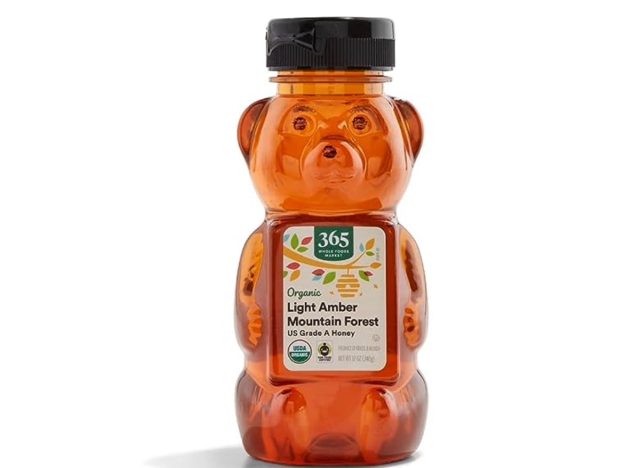
Though honey can provide a number of health benefits, when unpasteurized, this sweetener can contain poisonous alkaloids that can cause headaches, dizziness, nausea, and vomiting. It also can contain grayanotoxins, which can lead to paralysis and even death. Honey can also be susceptible to heavy metal contaminations from arsenic, mercury, cadmium, and lead.
For infants in particular, honey can be risky. That’s because honey contains a bacteria called C. botulinum that can create a toxin in a baby’s intestines, causing a rare yet deadly illness called infant botulism.
“That is why the American Academy of Pediatrics (AAP) doesn’t recommend honey to infants under the age of one,” says Amidor.
Puffer fish
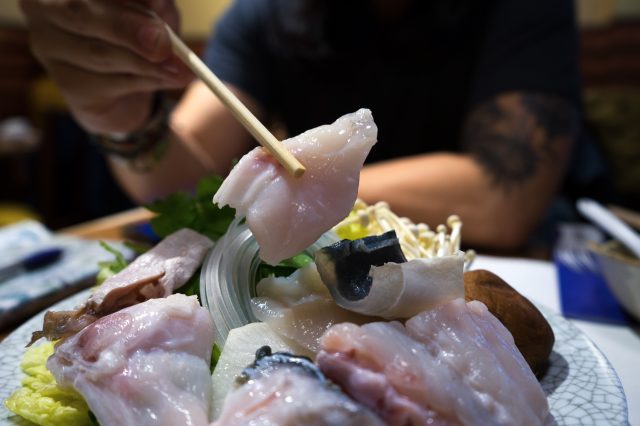
When cooked correctly, puffer fish—or fugu, as this dish is called in Japan—can be considered a delicacy. But sitting down to a fine dining experience featuring fugu can definitely be a roll of the dice when it comes to the possible health risks.
“When not cooked properly, puffer fish are actually poisonous,” says Dr. McCampbell. “In Japan, chefs have to take a national written and practical exam just to be able to cook puffer fish.”
Amidor also notes that “restaurants tend to ask for a waiver to be signed before you eat it!”
This is because the organs and liver of the puffer fish contain a lethal poison called tetrodotoxin, which the Washington Post describes as a “lightning-fast poison 275 times more deadly than cyanide, and there is no antidote.”
Sprouts

Though sprouts have a reputation for being a nutritious health food rich in fiber, vitamins, and minerals while also being low in sodium, fat, and calories, these young greens can be potentially toxic when not washed thoroughly ahead of eating.
Sprouts have been subject to a number of contamination outbreaks over the years. In December 2022, the FDA announced a major recall of alfalfa sprouts from a company called SunSprout Enterprises to investigate a salmonella outbreak across a handful of states.
“The warm, humid conditions needed to grow sprouts are also ideal for germs to grow,” says Dr. McCampbell. “Eating raw or lightly cooked sprouts, such as alfalfa, bean, or any other sprout, may lead to food poisoning from salmonella, E. coli, or listeria. Thoroughly cooking sprouts kills the harmful germs, and reduces the chance of food poisoning.”
Microwave popcorn

Although popcorn itself won’t put you in a dangerous position, the chemicals in the nonstick coating that lines the inside of microwave popcorn bags can manifest in toxic ways that can increase your cancer risk. As the popcorn cooks in the microwave, the bag lining decomposes in a way that can contaminate the salty kernels inside.
“You do want to avoid the microwaveable bags,” say the Nutrition Twins. “Nearly all microwave popcorn bags are lined with perfluorooctanoic acid (PFOA), which is the same toxic chemical that is found in Teflon pots and pans. It’s called a forever chemical since it stays in the body for very long periods of time. It’s an endocrine disrupter and it can threaten fertility. The EPA lists PFOA as a carcinogen. PFOA has been linked to cancer of the liver, kidney, breast, prostate, thyroid, bladder, and ovarian cancer.”
How to stay safe

“With anything that we ingest or are exposed to, it is important to remember that it is the dose that makes the poison,” Manaker advises. “For many of these examples, the toxicity can be a concern if a person is eating large quantities—not a little bit.”
“Food toxicity is frequently the result of improper preparation or handling,” adds Dr. McCampbell. “Bacteria multiply more quickly between 40°–140°F. That’s why it’s important to refrigerate your potato salad and cook your meat; keep cold food cold and hot food hot.”
- Source: https://jamanetwork.com/journals/jamainternalmedicine/fullarticle/2800411?guestAccessKey=60684841-ffdf-448b-bf41-dd3a9d228950&utm_source=For_The_Media&utm_medium=referral&utm_campaign=ftm_links&utm_content=tfl&utm_term=010923
- Source: https://www.consumerreports.org/cro/magazine/2015/01/how-much-arsenic-is-in-your-rice/index.htm#:~:text=Brown%20rice%20has%2080%20percent,t%20switch%20entirely%20to%20white.
- Source: https://wwwnc.cdc.gov/travel/yellowbook/2020/preparing-international-travelers/food-poisoning-from-marine-toxins#:~:text=Most%20cases%20result%20from%20eating,No%20deaths%20have%20been%20reported
- Source: https://www.ncbi.nlm.nih.gov/pmc/articles/PMC3153292/
- Source: https://www.ncbi.nlm.nih.gov/pmc/articles/PMC3153292/
- Source: https://www.cdc.gov/campylobacter/faq.html#:~:text=Campylobacter%20infection%2C%20or%20campylobacteriosis%2C%20is,year%20for%20every%20100%2C000%20people.
- Source: https://escambia.floridahealth.gov/programs-and-services/infectious-disease/epidemiology/_documents/campylobacteriosis-fact-sheet.pdf
- Source: https://www.cdc.gov/listeria/risk.html#:~:text=CDC%20estimates%20that%20Listeria%20is,year%2C%20and%20about%20260%20die.
- Source: https://www.atsdr.cdc.gov/toxprofiles/tp8-c2.pdf
- Source: https://pubmed.ncbi.nlm.nih.gov/24214851/#:~:text=Honey%20produced%20from%20the%20nectar,and%20eventually%20leads%20to%20death.
- Source: https://www.fda.gov/international-programs/cooperative-arrangements/fda-japan-exchange-letters-regarding-puffer-fish
- Source: https://www.fda.gov/food/outbreaks-foodborne-illness/outbreak-investigation-salmonella-sprouts-december-2022









